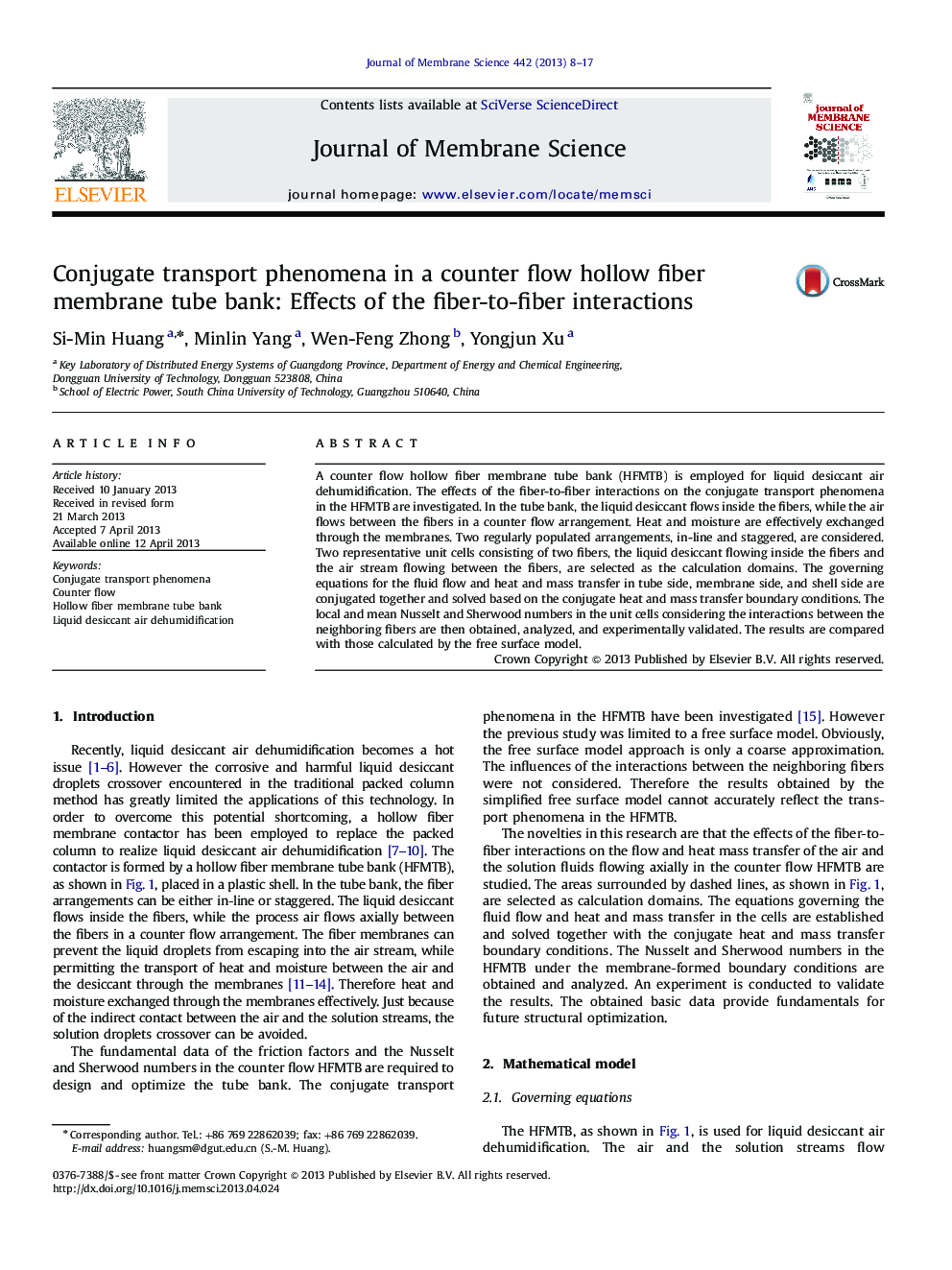| Article ID | Journal | Published Year | Pages | File Type |
|---|---|---|---|---|
| 634146 | Journal of Membrane Science | 2013 | 10 Pages |
•A counter flow hollow fiber membrane tube bank (HFMTB) is used for liquid desiccant air dehumidification.•Conjugate transport phenomena in the HFMTB are investigated.•The effects of the fiber-to-fiber interactions are seriously taken into account.•The fundamental data are useful for future structural optimization.
A counter flow hollow fiber membrane tube bank (HFMTB) is employed for liquid desiccant air dehumidification. The effects of the fiber-to-fiber interactions on the conjugate transport phenomena in the HFMTB are investigated. In the tube bank, the liquid desiccant flows inside the fibers, while the air flows between the fibers in a counter flow arrangement. Heat and moisture are effectively exchanged through the membranes. Two regularly populated arrangements, in-line and staggered, are considered. Two representative unit cells consisting of two fibers, the liquid desiccant flowing inside the fibers and the air stream flowing between the fibers, are selected as the calculation domains. The governing equations for the fluid flow and heat and mass transfer in tube side, membrane side, and shell side are conjugated together and solved based on the conjugate heat and mass transfer boundary conditions. The local and mean Nusselt and Sherwood numbers in the unit cells considering the interactions between the neighboring fibers are then obtained, analyzed, and experimentally validated. The results are compared with those calculated by the free surface model.
